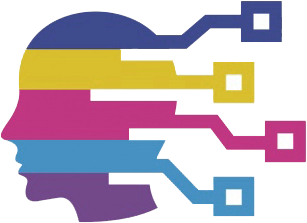As we look ahead, the integration of artificial intelligence into daily life is poised to escalate dramatically. The potential for AI agents to streamline tasks typically handled by humans is enticing, but they currently straddle the line between innovation and frustration. Traditional models are still marred by inaccuracies and limitations, but new breakthroughs are underway that unravel a more sophisticated future. One such development is S2, an agent generated by Simular AI, which showcases the profound implications of specialized AI in executing various digital tasks.
Understanding the Distinction: General vs. Specialized AI
S2 presents a compelling case for the benefits of combining advanced AI architecture with niche functionalities. While large language models (LLMs) have shown remarkable prowess in tasks requiring language comprehension and generalized reasoning, they falter when faced with the intricacies of navigating digital interfaces. Ang Li, co-founder and CEO of Simular AI, firmly articulates the nuanced challenges inherent in tasks undertaken by computer-using agents. This delineation highlights an often-overlooked truth: different types of AI are suitable for different types of challenges.
S2 leverages the strengths of formidable general-purpose models, such as OpenAI’s GPT-4o, while utilizing smaller, specialized models to tackle specific jobs. The advantage of this hybrid approach is accentuated in complex scenarios where an intelligent agent can deploy the most effective algorithm at the right moment. This strategic orchestration is not just an advancement; it marks a paradigm shift towards how we conceive of AI in our lives.
Data-Driven Adaptability: The Signature Feature of S2
S2 stands out, not merely due to its performance metrics against benchmarks like OSWorld and AndroidWorld, but crucially due to its capability for self-improvement. By utilizing an external memory module to document user interactions and outcomes, S2 is not just a static tool but rather an evolving entity capable of refining its processes over time. This element of learning from experience is vital, especially in a world where digital environments are perpetually changing.
This adaptability positions S2 ahead of its competitors—it surpasses the performance of other agents by successfully completing challenging tasks with greater efficiency. While the best competing agent only manages a 46 percent success rate in smartphone tasks, S2 outshines them with 50 percent. Such improvements are not mere benchmarks; they signal a pivotal shift toward intelligent assistance in complex environments.
The Roadblocks of Edge Cases and Learning Curves
Yet, the journey towards seamless AI assistance remains riddled with obstacles. Even sophisticated models like S2 are not immune to hiccups. Real-world applications expose limitations, as seen during my personal trial of this agent. Despite showing promise during mundane tasks like booking flights or searching for deals on Amazon, S2 struggled when faced with specific, intricate requests. The experience felt eerily reminiscent of navigating a labyrinth, with S2 caught in a feedback loop and unable to retrieve crucial contact information.
These setbacks highlight a pressing issue—while developers rush toward creating the next big AI solution, they must address how these systems manage nuance and complexity. Presently, human counterparts can complete over 72 percent of OSWorld tasks, while AI agents face failures 38 percent of the time on similarly complex challenges. This stark contrast underscores the notion that we may be pushing AI’s capabilities too soon, creating a chasm between expected performance and practical utility.
The Future is Collaborative, not Competing
Victor Zhong, a computer scientist, sheds light on the future trajectory of AI as we anticipate better visual comprehension capabilities in upcoming models. As systems like S2 pave the way for hybrid methodologies, there lies substantial potential in leveraging diverse data sources and algorithms. However, the discourse surrounding AI must shift from viewing these agents as competitors to human performance, entitled to recognition for their extraordinary capabilities, while continuously emphasizing the superiority of human insight in critical thinking and navigational tasks.
In essence, the journey toward a reliable and intelligent digital assistant is marked not just by technological innovation but by a balanced understanding of both AI’s current capabilities and its limitations. As we witness advancements like S2, it’s crucial to acknowledge them for what they are—impressive yet evolving entities—reflecting the work still needed to bridge the gap between hype and reality in AI utilization.

